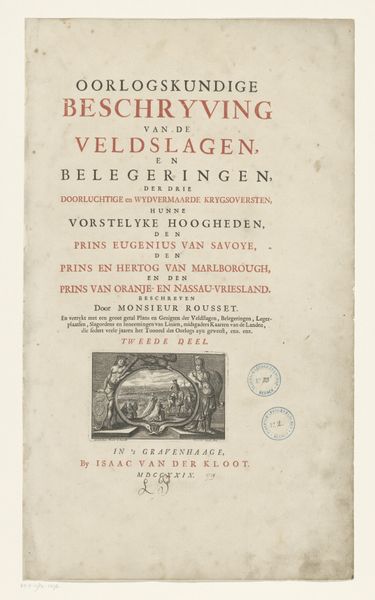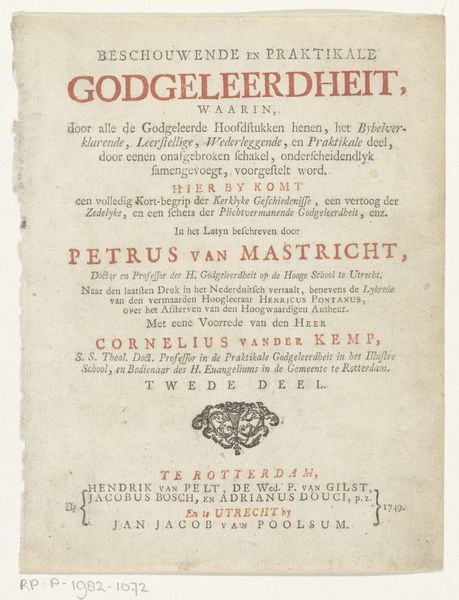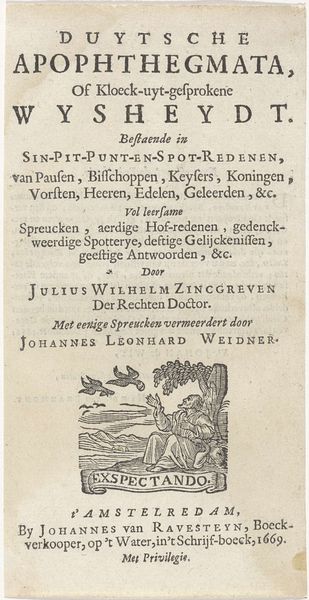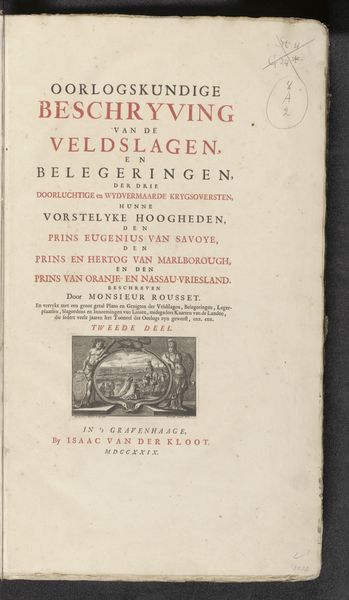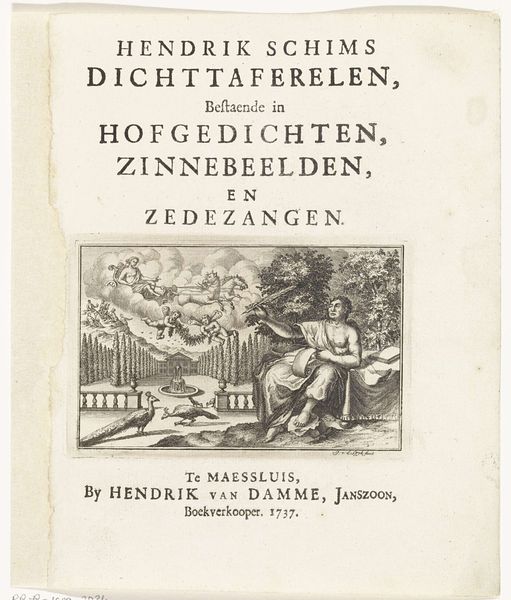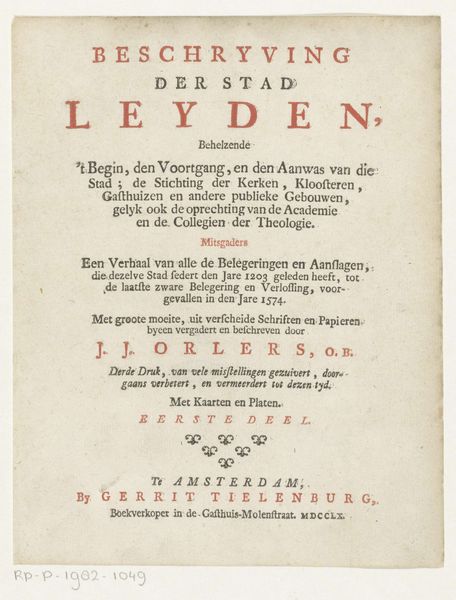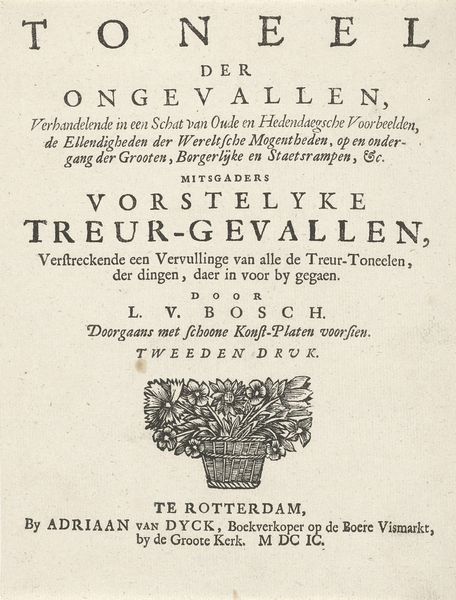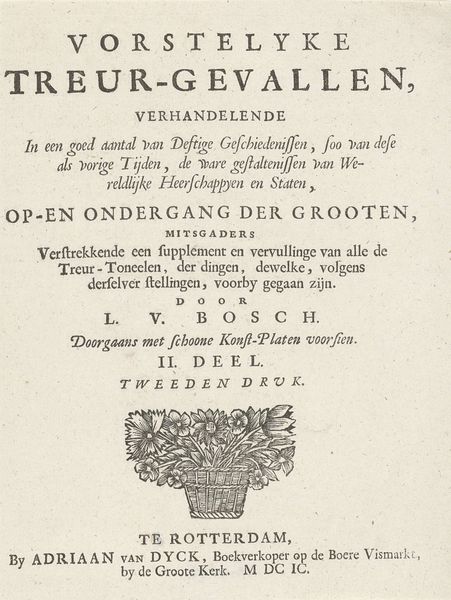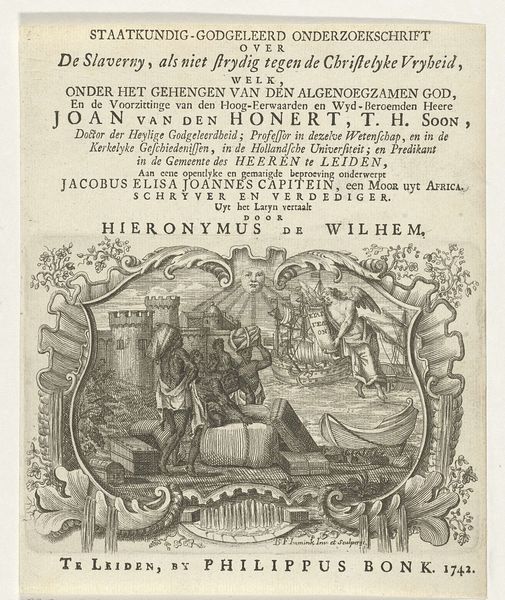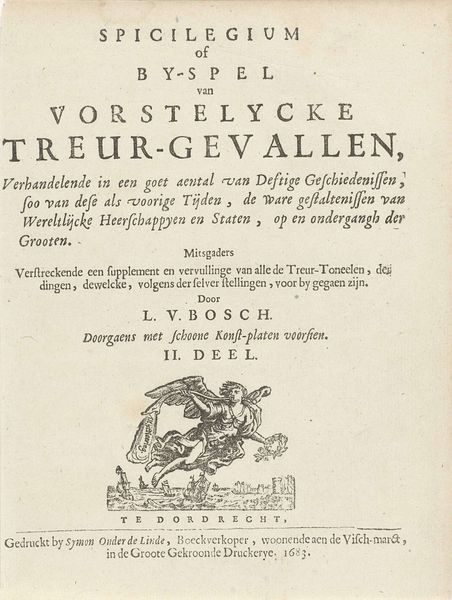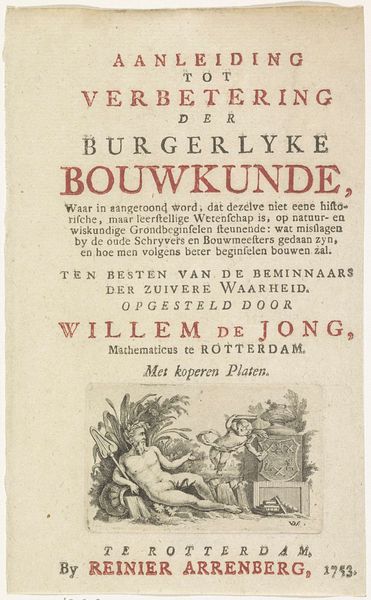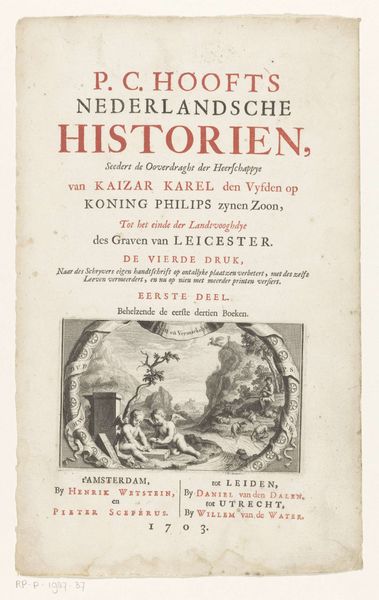
print, paper, typography, engraving
#
baroque
# print
#
paper
#
typography
#
engraving
Dimensions: height 38 mm, width 64 mm, height 174 mm, width 141 mm
Copyright: Rijks Museum: Open Domain
Curator: Here we have "Minerva en zittende figuur," a print dating back to 1718, currently housed in the Rijksmuseum. It's an engraving on paper, including some rather lovely typography. What's your immediate reaction to it? Editor: Austere, isn't it? The monochrome palette emphasizes the formality of the figures, and I'd say it has a certain militant quality. There's definitely a sense of established power radiating off the composition. Curator: Absolutely. Minerva, of course, embodies wisdom, strategic warfare, and craftsmanship. Her presence here signifies the authority of intellect. Note her posture, too. Quite regal. Editor: Right, she's positioned alongside another figure—seated, almost in deference. Given the publication date, this image may carry strong sociopolitical meaning in a very specific time, no? Curator: Indubitably. Consider the book's title: "Holy Feast Songs, containing The Birth and Suffering of the Saviour…" Minerva's inclusion feels… curious. The "Triumph of Faith" is mentioned—could the print possibly depict faith's protector? Editor: Or perhaps, a symbolic assertion of power by those governing bodies that upheld religious doctrines? You know, the ruling elite liked to see themselves in mythological and allegorical forms, aligning themselves with virtuous ideals... while simultaneously crushing dissent. Curator: A valid point. I am also struck by the theatrical, almost staged presentation of the depicted characters; an allegory of power rather than actual belief. Editor: Well, isn't that always the case? Art reflecting back to us the ideals and the hypocrisy of the times. It certainly makes you think about how cultural and religious values can be visually manipulated to serve specific interests. It also encourages to think if it is much different today. Curator: Indeed. Even a seemingly simple print like this unveils layers of cultural complexity if you start digging beneath the surface. The enduring appeal of visual symbols, isn't it remarkable? Editor: Always something more than meets the eye, particularly with older works, especially art connected to religious or political ideas. They often seem innocent until the context rushes to the surface, doesn’t it?
Comments
No comments
Be the first to comment and join the conversation on the ultimate creative platform.
